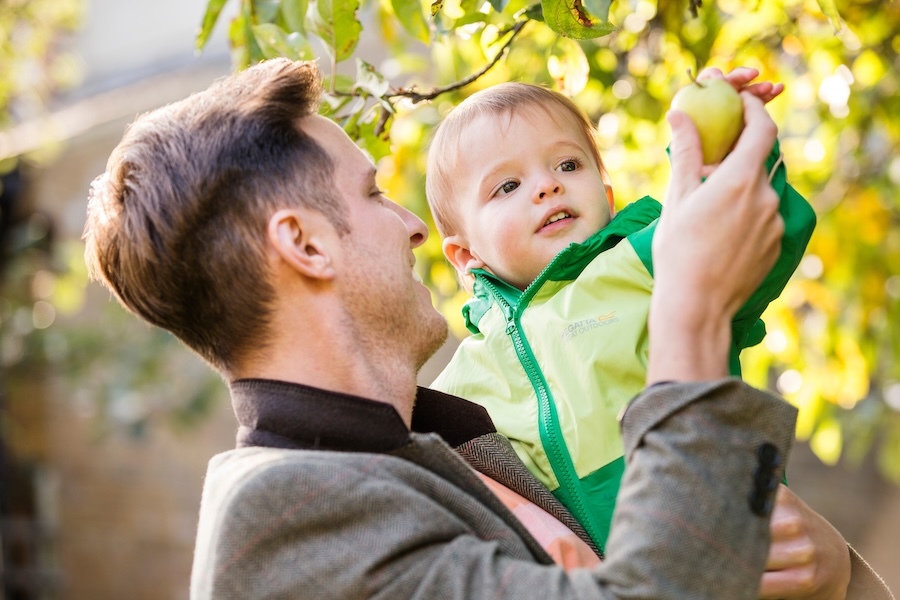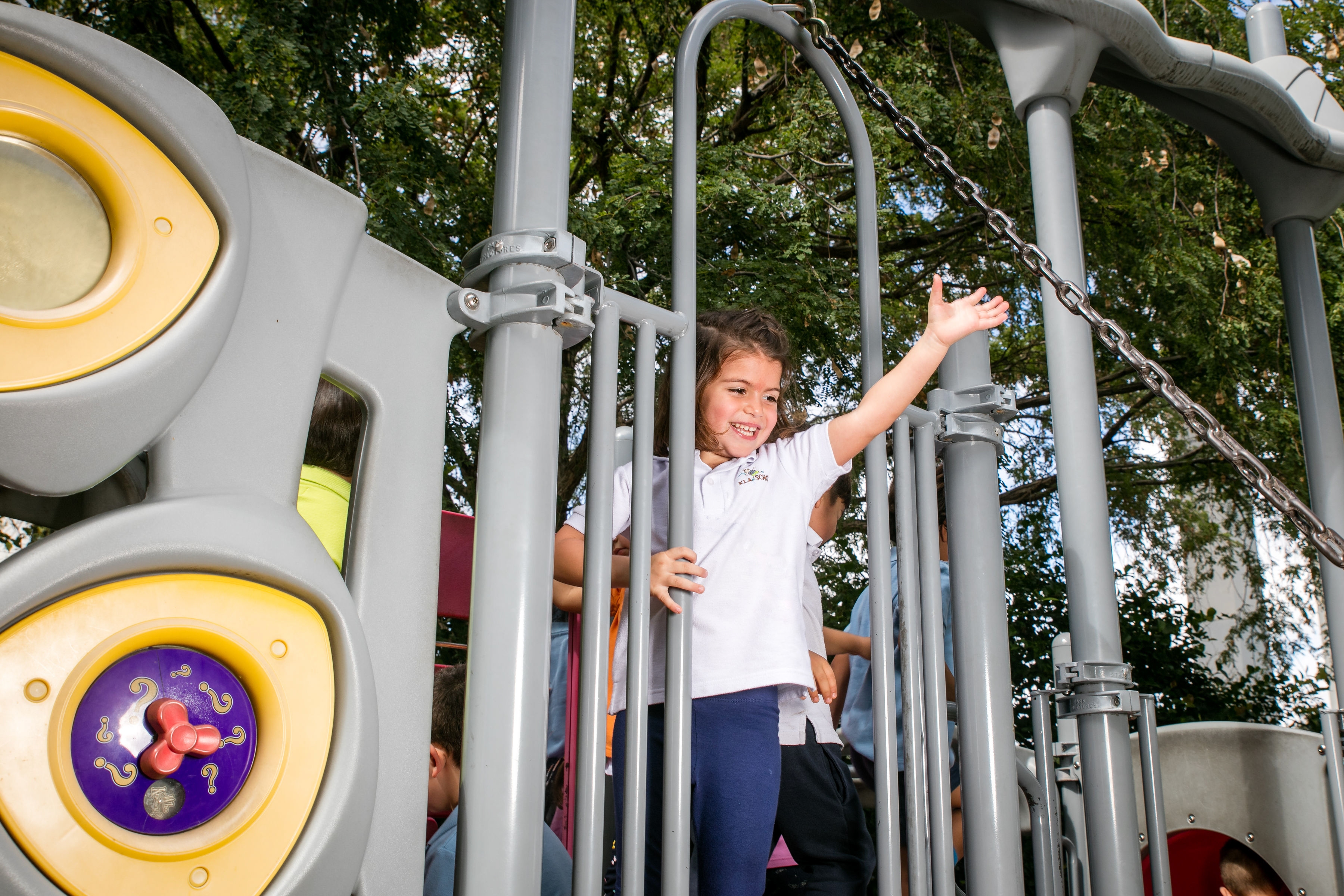Toddler Language Milestones and 20 Activities for Expression
Topics: Child Development
Age Range: Preschool
Toddler language development is a fascinating journey, and many parents wonder: How many words should a 2-year-old say and understand? What are the best activities to encourage toddler speech development?
At KLA Schools, our preschool program for 2 year olds is carefully designed to meet the developmental needs of children at this exciting stage. We focus on creating activities and experiences that challenge, inspire, and help your child grow. In this article we’ll share some key 2 year old language milestones and 20 toddler language development activities to try at home.
Key Toddler Language Development Milestones
Your toddler may chatter a mile a minute, or they may speak now and then. In any case, you may be wondering if they’re hitting the standard toddler language milestones. Every child is different, but there are a few ways you can gauge your 2 year old’s language development.
First, let’s define the difference between a milestone and an average.
Language Development in Toddlers: Milestones vs Averages
A milestone is defined as something that 90% of children in a certain age range demonstrate, whereas an average is something that 50% of children in a certain age range demonstrate. This is a key distinction to remember. If parents read an average and think it’s a milestone, they can be erroneously led to believe that their toddler is falling behind in their development. To prevent this, we’ll focus on milestones rather than averages.
Milestones for Toddler Language Development: Discovery and Self-Expression
Stanford Medicine Children’s Health lists a few toddler language development milestones for parents to be aware of between the ages of 18 months to 3 years. These include:
- A vocabulary of approximately 50 words for 2 year olds. These words are typically a mixture of nouns, verbs, adverbs, and adjectives. The pronunciation of these words isn’t as important at this stage.
- Being able to put two or three words together to form very basic phrases. For example, “I go” or “give my toy.”
Able to make basic animal sounds such as “meow” or “moo.” - Starts to use pronouns like “hers” or “mine.” They may not always use these words correctly, but they’re beginning to understand their function.
Knows the words for common foods and asks for them by name. - Understands concepts like “in” or “on.”
- Uses words to describe things such as “soft” or “slow.”
- Able to answer simple questions like, “where is the cat?”
- Able to follow simple directions like “close the door.”
- Able to identify simple objects and body parts like “chair” and “nose.” Some toddlers can point to these things before they begin to use the words for them.
- Answers simple yes or no questions and “where” and “what” questions, either with words or gestures.
- Can have two-way “conversations” even if you don’t know what they’re saying.
- Repeats short phrases (2-3 words) back to you often.
- Begins to ask questions with rising voice intonation. Younger toddlers may ask very simply, like “dog?” Older toddlers may ask more complex sentences like “my milk?”
- Older toddlers begin to use more plural words and past-tense verbs.
When reading this list of 2 year old language milestones, it's important to remember that every child is different. Milestones are estimates, not rigid guidelines. In addition, because toddlers are learning words at a rapid rate, they may do things like leave consonant sounds off the end of a word or substitute one sound for another—for example:
- Saying “ba” instead of “ball”
- Dropping consonant sounds (“ca” instead of “cat”)
- Mixing up letters (“sirt” instead of “shirt”)
By age 2, your child’s speech should be 50% understandable to familiar listeners.

What if My Toddler Isn’t Meeting Toddler Language Milestones?
- Every child develops at their own pace, but there are signs that may warrant a conversation with a pediatrician, including:
By 1-2 years old, struggles to pronounce common sounds (p, b, m, w, h). - By 2-3 years old, doesn’t correctly pronounce f, k, g, d, t, n most of the time.
- Speech is difficult to understand—even for family members.
- Can’t follow simple directions or answer basic questions.
- Shows little interest in verbal communication.
If you have concerns, consulting a pediatrician or speech therapist can provide guidance on your child’s speech development.
How Parents Can Foster Language Development In 2 Year Olds
As a parent, you are your child’s first teacher. While a good daycare center for 2 year olds is focused on age-appropriate development, there are many toddler language development activities you can do at home. It’s a good idea to consult your child’s pediatrician and daycare teachers for other ideas that your 2 year old might especially enjoy.
These language development activities are an ideal way to help your toddler learn about the world around them, as well as develop a vocabulary for expression. Because your toddler looks to you to see how they should act, modeling expression is one of the best ways to help support your child’s language development.
Toddler Language Milestones: 20 Activities for Better Expression
Try these 20 fun and educational activities that encourage language development in 2 year olds:
- Ask questions and then answer them yourself. “Thinking aloud” may not seem like an activity for language development in 2 year olds, but it can be. For example, if you’re grocery shopping with your toddler, you may bring them to the produce and ask yourself, “What fruit should I buy? Maybe these apples. Should I choose red or green apples? I’ll look at these green ones.” This is an ideal way to model questions and answers.
- Narrate your daily activities. Aside from asking and then answering your own questions, you can also narrate your everyday tasks. For example, you can say something like, “I’m sweeping crumbs off the floor.”
- Narrate your toddler’s activities. You can also help your toddler express themselves by describing what they’re doing. For example, “You are kicking a blue ball. It’s a very bouncy ball, isn’t it?”
- Read books together. Reading is one of the best toddler language development activities. You can ask questions about the book, or discuss the illustrations together.
- Play hide and seek together. This may not seem like an activity for language development in toddlers, but there are many opportunities for expression. You can build expression into this activity by asking questions like “Where are you? Are you behind this door?”
- Play make-believe. Children learn through play, and playing pretend with your child is a fun way to help them develop their language skills and learn how to express themselves.
- Build block towers. Not only are block towers a great way to build your 2 year old’s fine motor skills and introduce them to engineering concepts, but they can help build language skills too. You can ask questions about the color of the blocks or talk about how tall the tower is.
- Get your toddler involved in simple household tasks. Many 2 year olds can help with basic household chores like picking up their toys and helping you make the bed. Encouraging toddler independence through these tasks not only builds their vocabulary but also fosters confidence and self-expression. You can help your child build their vocabulary by asking things like, “where do your puzzles go?”
- Do a scavenger hunt. A simple toddler-friendly scavenger hunt is a fun way to help build their language skills. For example, you can hide some stuffed animals around the living room, and create a list with drawings or photographs of these animals.
- Sing songs together. Many classic children’s songs are ideal for helping 2 year olds make associations between words and objects or concepts—for example, “Hokey Pokey”, “If You’re Happy and You Know It”, and “Head, Shoulders, Knees, and Toes.”
- Listen to music together. Even music that doesn’t have lyrics can help build your toddler’s language skills. The beat and intonation of music can help make associations with verbal syllables. You can also encourage your child to clap, jump, twirl, and stomp their feet.
- Sort items for language development. This activity can help your 2 year old learn words for related items as well as build math skills. For example, you can give your child colored stickers and ask them to stick them to pieces of paper in the corresponding color. Be sure to use the words for these colors as they do so.
- Create arts and crafts together and have discussions. Painting, drawing, sculpting, and building are fun toddler arts and crafts activities that can also help them to learn expression. Ask open-ended questions like, “what color is that?” and “what will you do now?” Explore art education for toddlers to find structured activities that boost creativity and language skills.
- Play rhyming games or read rhyming books. Rhyming words are an ideal way to help build your 2 year old’s phonological awareness—or the way sounds work to build words.
- Clap out the syllables in a word. Make a game out of the way words sound by clapping. Start out by thinking of words together that have one syllable, like cat, chair, and ball. Together, say the word and clap once. You can move up to two-syllable words and three-syllable words.
- Play I-Spy for toddler language development. Typically, I-Spy is ideal for older children who have a good understanding of things like color, size, and shape. However, you can modify this for a 2 year old by identifying the object yourself and pointing to it or picking it up.
- Do jigsaw puzzles together. Puzzles for 2 year olds are very simple, which makes it ideal to help them to build their language skills. When your child puts a puzzle piece in place, identify what’s depicted on the puzzle piece.
- Play with puppets. Not only are puppets a great instance of make-believe play, but they’re a fun and engaging way to encourage your child to have basic conversations and express themselves.
- Play “Name This Thing.” This activity may seem very simple, but simply pointing to household objects and asking your 2 year old what they’re called can be an ideal way to build their language skills. You can start out by saying the name of the object and encouraging to do the same.
- Use a sensory bin. Sensory bins have a variety of developmental benefits, including building expression and language. Talk to your child as they play, asking them questions about colors and texture, and ask what they think will happen if they use one item to interact with another.
Advice for Meeting 2 Year Old Language Milestones
These are just 20 ideas to help your 2 year old meet toddler language development milestones. While every child is different, it’s important to remember:
Every child develops at their own pace, but it's important to understand the difference between milestones vs. averages:
- Milestones: Achieved by 90% of children in a given age range.
- Averages: Achieved by 50% of children in a given age range.
If your 2-year-old is not meeting key language milestones, consider consulting a pediatrician, especially if:
- They struggle to pronounce common sounds (p, b, m, w, h, f, k, g, d, t).
- Their speech is difficult to understand even by familiar people.
Early intervention and speech therapy can be beneficial for language development.
While you are your child’s first teacher, at KLA Schools we’re your parenting partner. We’re more than happy to discuss your 2 year old’s language development milestones with you and offer advice uniquely tailored to them.

